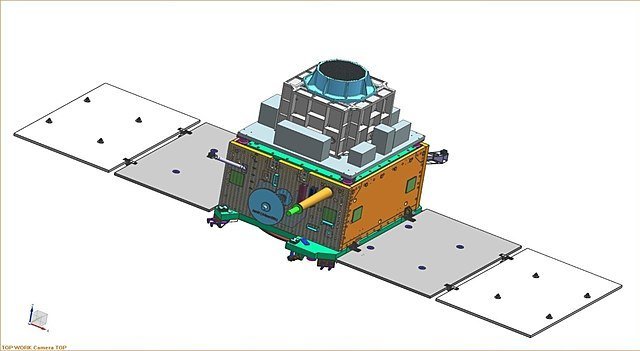ISRO has successfully launched the satellite XPoSat which is world’s second ‘X-ray Polarimetry Space Observatory’. This will carry out research in space-based polarisation measurements of X-ray emission from various cosmic sources. Earlier, NASA had sent ‘Imaging X-ray Polarimetry Explorer (IXPE)’ into space in 2021 for the same objectives. X-ray Polarimetry Space Observatories measure the amount and direction of polarization of incoming X-rays emanating from cosmic bodies and serve as a unique tool to study the laws of nature in extreme conditions.
Indian Space Research Organisation (ISRO) has successfully launched XPoSat, a ‘X-ray Polarimetry Observatory’. It is designed to carry out research in space-based polarisation and spectroscopic measurements of X-ray emission from cosmic sources.
It carries two payloads namely POLIX (Polarimeter Instrument in X-rays) and XSPECT (X-ray Spectroscopy and Timing). While POLIX will measure polarisation of X-rays in the energy band 8-30keV emanating from about 50 potential cosmic sources through Thomson Scattering, the XSPECT payload will carry out long term spectral and temporal studies of cosmic X-ray sources in the energy band 0.8-15ke.
NASA’s Imaging X-ray Polarimetry Explorer (IXPE) launched into space on 9 December 2021 was the first X-ray Polarimetry Space Observatory. Since its launch, it has contributed to several groundbreaking research through studying polarization of X-rays from many different types of celestial objects such as the remnants of supernova explosions, powerful particle streams spit out by feeding black holes, etc.
X-ray Polarimetry Space Observatories measure the amount and direction of polarization of incoming X-rays emanating from cosmic bodies.
Since polarised light carries unique details about the source and medium it has passed through, X-ray Polarimetry Space Observatories like IXPE and XPoSat serve as a unique tool to study the laws of nature in extreme conditions.
***
References:
- ISRO. X-ray Polarimeter Satellite (XPoSat). Available at https://www.isro.gov.in/PSLV_C58_XPoSat_Mission.html
- ISRO. PSLV-C58/XPoSat Mission. Available at https://www.isro.gov.in/media_isro/pdf/Missions/PSLV_C58/PSLV_C58_Brochure.pdf
- NASA 2023. IXPE Overview. Available at https://www.nasa.gov/ixpe-overview/
- NASA 2023. NASA’s IXPE Marks Two Years of Groundbreaking X-ray Astronomy. Available at https://www.nasa.gov/missions/ixpe/nasas-ixpe-marks-two-years-of-groundbreaking-x-ray-astronomy/
- O’Dell S.L., et al 2018. The Imaging X-ray Polarimetry Explorer (IXPE): technical overview. NASA. Available at https://ntrs.nasa.gov/api/citations/20180006418/downloads/20180006418.pdf
***






































